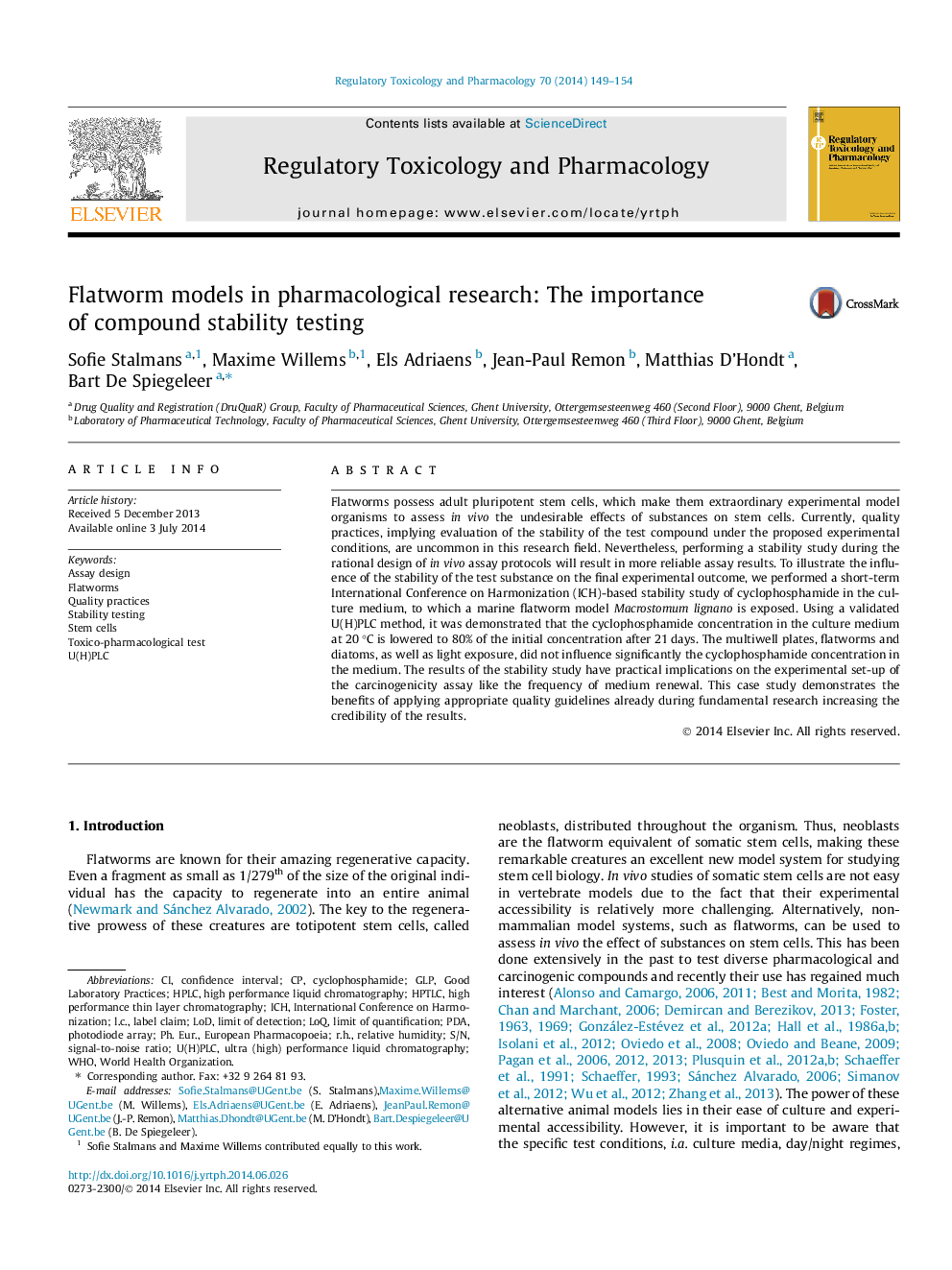| Article ID | Journal | Published Year | Pages | File Type |
|---|---|---|---|---|
| 5856870 | Regulatory Toxicology and Pharmacology | 2014 | 6 Pages |
â¢Cyclophosphamide is a standard test compound in flatworm carcinogenicity assays.â¢An analytical stability test of cyclophosphamide in culture medium was performed.â¢A rapid, stability-indicating validated UPLC method was used.â¢Stability results determine the experimental set-up of the carcinogenicity assay.â¢Appropriate quality practices will result in more reliable assay results.
Flatworms possess adult pluripotent stem cells, which make them extraordinary experimental model organisms to assess in vivo the undesirable effects of substances on stem cells. Currently, quality practices, implying evaluation of the stability of the test compound under the proposed experimental conditions, are uncommon in this research field. Nevertheless, performing a stability study during the rational design of in vivo assay protocols will result in more reliable assay results. To illustrate the influence of the stability of the test substance on the final experimental outcome, we performed a short-term International Conference on Harmonization (ICH)-based stability study of cyclophosphamide in the culture medium, to which a marine flatworm model Macrostomum lignano is exposed. Using a validated U(H)PLC method, it was demonstrated that the cyclophosphamide concentration in the culture medium at 20 °C is lowered to 80% of the initial concentration after 21 days. The multiwell plates, flatworms and diatoms, as well as light exposure, did not influence significantly the cyclophosphamide concentration in the medium. The results of the stability study have practical implications on the experimental set-up of the carcinogenicity assay like the frequency of medium renewal. This case study demonstrates the benefits of applying appropriate quality guidelines already during fundamental research increasing the credibility of the results.
